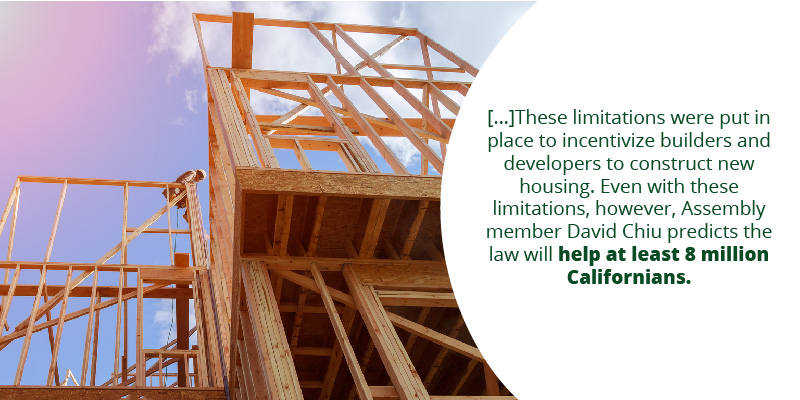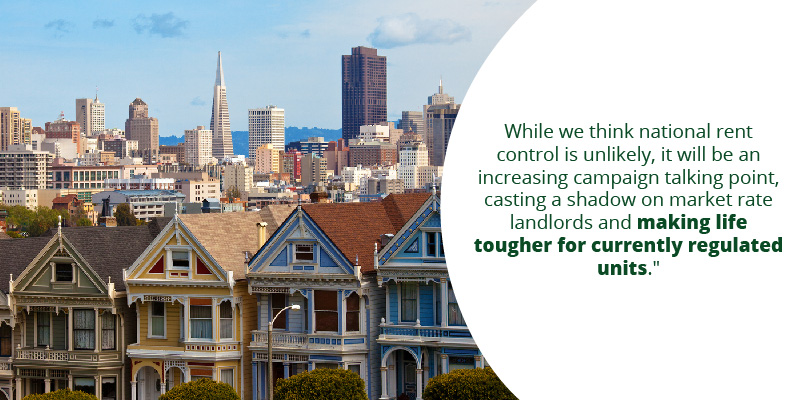It is widely believed that an affordable housing crisis is currently affecting the United States. Even when homebuyers and renters can find available housing and rental properties, often they find that the prices are too high for them to afford. The high cost of living has led to increased homelessness, especially in big cities. The problem is not epidemic in Pennsylvania, or Pittsburgh specifically, but the political and civic leaders in Western PA have identified affordable housing as a problem to be solved in order to provide economic prosperity for all. Thus far, no one on Grant Street or Harrisburg has proposed putting controls on the housing market but the city has made affordable housing a requirement for developers receiving subsidies for their projects. What is the future of such intervention? Look at California’s new initiatives to get a signal.
In order to address these social issues, Gavin Newsom, the governor of California, signed into law a new statewide rent control law that will take effect January 1st, 2020.
Understanding the New Rent Control Law
With its new rent control law, California is now the third state to pass statewide rent control this year, the other two being New York and Oregon. California’s bill is set to last for 10 years (through 2030), and it caps annual rent increases at 5%, with the cost of inflation included. It also makes it more difficult for landlords to evict tenants. Some experts say that California’s law is one of the strongest in the country at controlling rent increases and protecting tenants.
The California Apartment Association (CAA) believed that the state should instead focus on building new housing for those who need it, however Newsom has decided to do both, and then some. According to Newsom, rent control, tenant protections, and new construction make up his three pronged approach for addressing affordable housing.
Tom Bannon, the CEO of the CAA sent the following comment to CoStar News regarding the next steps to take in this initiative:
“Now that California has adopted the nation’s most sweeping statewide tenant protections, it’s time to fix the root cause of our housing crisis, a chronic lack of supply.”
Newsom said at the bill’s signing:
“We’re living in the wealthiest state in the country and while we’ve made progress in reducing our poverty rate, it’s still the highest in the nation. This is the issue that defines all other issues in this state.”
Impact of Rent Control on Californians
California currently has 17 million residents who rent, and of those, more than half pay more than 30% of their monthly income on rent. There are also millions of Californians who pay more than half of their monthly income on rent. A renter is considered cost-burdened when they spend more than 30% of their monthly income on rent, so this demonstrates how significantly the affordable housing crisis has hit California. It also helps to explain why California has the highest homeless population of any state.
The new law does have some limitations. As mentioned previously, it will be in effect for 10 years. It also does not affect any housing or rental properties that were built in the last 15 years, single family homes, and duplexes where the owner is one of the tenants. Single family homes owned by corporations or REITs would still be impacted by the bill however.
These limitations were put in place to incentivize builders and developers to construct new housing. Even with these limitations, however, Assembly member David Chiu predicts the law will help at least 8 million Californians. Chiu adds that “it’s historic legislation, but folks, our work is not done…In the long run, we have to build millions of new units at all levels of affordability to solve this crisis.” Chiu doubles down on the governor’s statements that construction of new homes is an important part of the future state of California’s housing.
Impact of Rent Control on Real Estate Investments
According to real estate investment analyst, Alexander Goldfarb, the rent control law could loom over real estate investments. While he does begin by saying the three states’ rent control laws “likely won’t have a revenue impact until next cycle, which might as well be next century given that most investors are judged on an almost weekly basis in the current market.” He goes on to say the following:
“But this is something we believe investors should pay more attention [to] as regulatory threats are likely to increase…We believe the rent control debate will continue across the country as renters face rising housing costs. While we think national rent control is unlikely, it will be an increasing campaign talking point, casting a shadow on market rate landlords and making life tougher for currently regulated units.”
Going Forward
The rent control laws passed by California, New York, and Oregon are set to make housing more affordable for millions of Americans. These laws are only the first step, however. In order to further assist the homeless and cost-burdened residents of the country, construction of new housing must be, and is, next on the agenda. The message this sends to investors is one of caution. New housing should be on its way, however, rent control will impact market rates for the next ten years.




